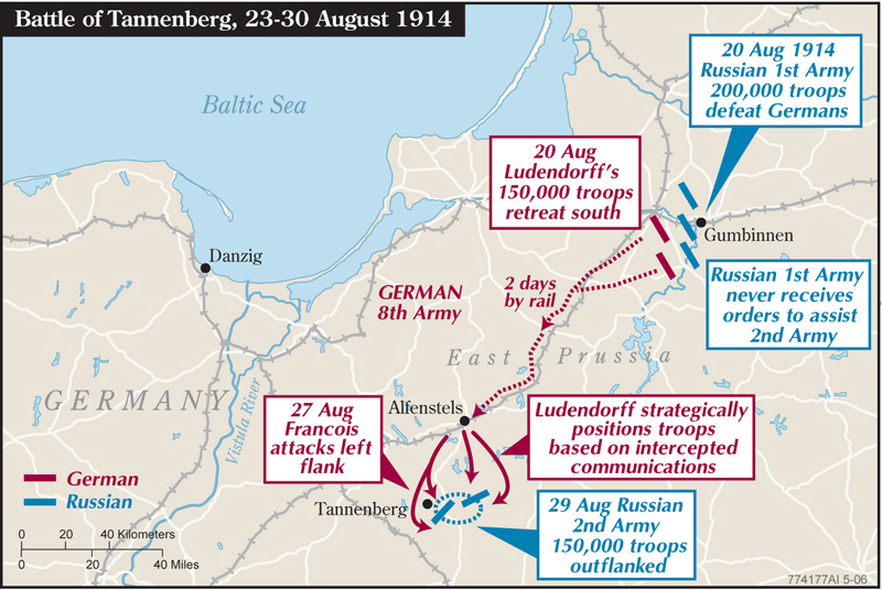
S'étant déroulée 25 juillet au 10 août 1944 sur le front de l'Est de la Seconde Guerre mondiale, il s'agit du dernier épisode des combats pour le contrôle de l’isthme stratégique de Narva, en Estonie.

La bataille de la ligne Tannenberg (allemand : Die Schlacht um die Tannenbergstellung russe : Битва за линию « Танненбер г ») ou la bataille des monts Bleus (estonien : Sinimägede lahing) est un engagement militaire qui a opposé l'armée allemande à l'armée rouge.As the Soviet forces were constantly reinforced, their overall casualties are estimated by Estonian historian Mart Laar to be 170,000 dead and wounded. The German force of 22,250 men held off 136,830 Soviet troops. Roughly half of the infantry consisted of the personnel of the 20th Waffen Grenadier Division of the SS (1st Estonian).

Waffen-SS forces included 24 volunteer infantry battalions from the SS Division Nordland, the SS Division Langemarck, the SS Division Nederland, and the Walloon Legion. The strategic aim of the Soviet Estonian Operation was to reoccupy Estonia as a favorable base for the invasions of Finland and East Prussia. The battle was fought on the Eastern Front during World War II.

They fought for the strategically important Narva Isthmus from 25 July–10 August 1944. The Battle of Tannenberg Line (German: Die Schlacht um die Tannenbergstellung Russian: Битва за линию «Танненберг») or the Battle of the Blue Hills (Estonian: Sinimägede lahing) was a military engagement between the German Army Detachment Narwa and the Soviet Leningrad Front.


 0 kommentar(er)
0 kommentar(er)
